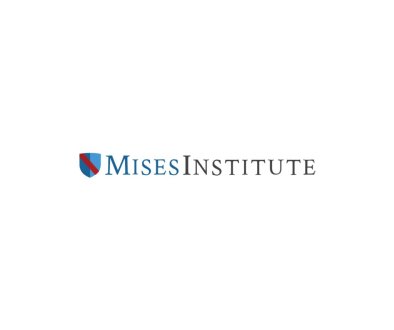Dallas ’63: A Brilliant Synthesis Regarding the November 22, 1963 Coup d’état
Dallas ’63: A Brilliant Synthesis Regarding the November 22, 1963 Coup d’état, by Charles Burris
Once again, the intrepid Peter Dale Scott takes us into that claustrophobic wilderness of mirrors where the criminal underworld meets the establishment upperworld in the sub-rosa labyrinth of the Deep State. Scott is the premier synthesizer unearthing all the various seemingly unconnected strands of hard documentary factual evidence and counterfactual hypothesizing concerning the November 22, 1963, coup d’état.
He begins by addressing head-on the seminal question of “Who was Lee Harvey Oswald?” in a brilliantly sketched portrait we have not seen before. The intelligence services (especially the CIA’s chief of counterintelligence James Jesus Angleton – Associate Deputy Director of Operations for Counterintelligence (ADDOCI) suspected a Soviet mole had penetrated the dank bowels of the Deep State and obtained highly secret information concerning the U-2 spy plane. Soon an elaborate multilayered mole hunt began.
Abroad, the CIA/State Department “dangled” Oswald as a US Marine radar operator “defector” to the Soviets, while in the US they compiled a byzantine, contradictory and ever-shifting documentary “legend” of manipulated and altered biographical data concerning Oswald as a trap to snare whom among the various interagency intelligence personnel who accessed his files was the possible mole. Upon his return to the US, Oswald continued his counterintelligence role as agent provocateur, informer, and ultimately as “patsy.”
Mentioned almost in passing was Pyotr Popov, a Soviet military intelligence (GRU) officer who had been passing secrets to the Americans for seven years. In April 1958, Popov had alerted his Soviet Russia Division (SRD) case officer George Kisevalter that clandestine technical information regarding the CIA U-2 spy plane had reached Soviet intelligence via a Soviet mole. Thus began Angelton’s elaborate efforts to discover and out this treacherous mole. We journey deeper within the Wilderness of Mirrors as a young Marine radar operator, Lee Harvey Oswald, soon attempts defection to the USSR, entering the cloistered labyrinth of decades of lies, disinformation, duplicity, and deception regarding this mysterious individual.
That disturbing aspect of the story is fleshed out in John M. Newman’s Countdown to Darkness: The Assassination of President Kennedy, Volume II, and in Peter Dale Scott’s Dallas ’63: The First Deep State Revolt Against the White House. Angelton was in the epicenter of events which led to the November 22, 1963 coup d’état and savage murder of President John F. Kennedy.
As he was dying from lung cancer, the Machiavellian CIA head of Counterintelligence, James Jesus Angleton, provided author Joseph J. Trento (also cited by Morley in his book, The Ghost: The Secret Life of CIA Spymaster James Jesus Angleton) this startling candid and diabolic confession:
“You know how I got to be in charge of counterintelligence? I agreed not to polygraph or require detailed background checks on Allen Dulles and 60 of his closest friends . . . They were afraid that their own business dealings with Hitler’s pals would come out. They were too arrogant to believe that the Russians would discover it all . . .
“Fundamentally, the founding fathers of U.S. intelligence were liars. The better you lied and the more you betrayed, the more likely you would be promoted. These people attracted and promoted each other. Outside of their duplicity, the only thing they had in common was a desire for absolute power. I did things that, in looking back on my life, I regret. But I was part of it and loved being in it . . . Allen Dulles, Richard Helms, Carmel Offiie, and Frank Wisner were the grand masters. If you were in a room with them you were in a room full of people that you had to believe would deservedly end up in hell. I guess I will see them there soon.”
In my personal library I have several thousand books, hundreds relating to the covert and overt background concerning the assassination of President John Fitzgerald Kennedy. From every chapter, from every page of Dallas ’63, leaps long forgotten names and events from these shelved volumes which Scott has masterfully woven into a head-spinning narrative describing the sinister milieu of intriguers from that period.
This concise volume is unlike any previous work on the subject in its magisterial detail of facts and scrupulous documentation of sources. I highly recommend it to the experienced JFK Assassination research community.
Revisiting the “Legend” of Lee Harvey Oswald
[With the onrush of contradictory information/disinformation being put out concerning the alleged attempted assassin of President Donald Trump, Thomas Matthew Crooks, let us briefly take a look at the “patsy” in the November 22, 1963 assassination of President John F. Kennedy.]
The “Legend” of Lee Harvey Oswald, by Charles Burris
Because so many of my LRC articles/blogs over the years have focused upon the November 22, 1963 assassination of President John F. Kennedy and the insidious coup d’état by Vice President Lyndon B. Johnson and the highest echelons of the National Security State, many readers have inquired again and again what was my assessment of Lee Harvey Oswald, targeted by the Warren Commission as the sole assassin. I have over 100 books in my personal library on these matters. Here briefly are my thoughts and reflections on this controversial subject.
The “Legend” of Lee Harvey Oswald
Our story begins with Petr Popov. Popov was a Soviet military intelligence (GRU) officer who had been passing secrets to the Americans for seven years. In April 1958, Popov had alerted his Soviet Russia Division (SRD) case officer George Kisevalter that clandestine te
Article from LewRockwell

LewRockwell.com is a libertarian website that publishes articles, essays, and blog posts advocating for minimal government, free markets, and individual liberty. The site was founded by Lew Rockwell, an American libertarian political commentator, activist, and former congressional staffer. The website often features content that is critical of mainstream politics, state intervention, and foreign policy, among other topics. It is a platform frequently used to disseminate Austrian economics, a school of economic thought that is popular among some libertarians.




